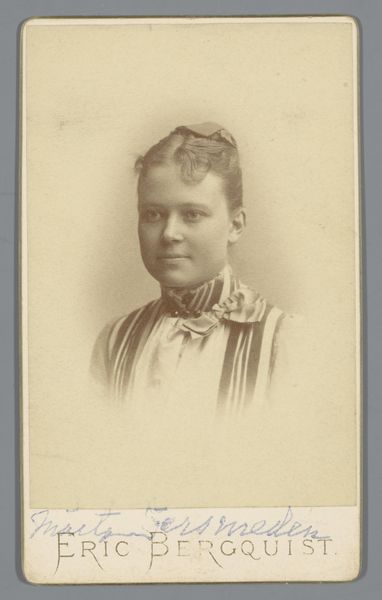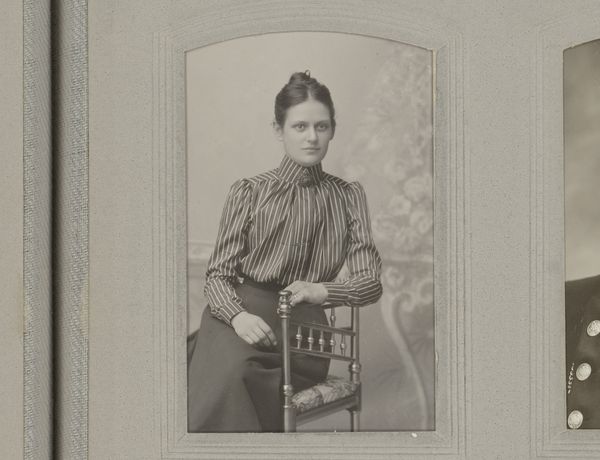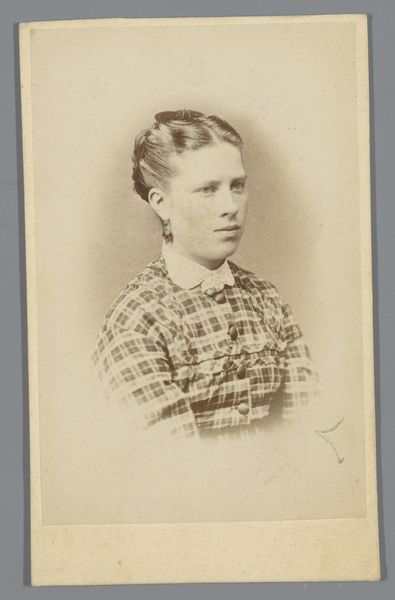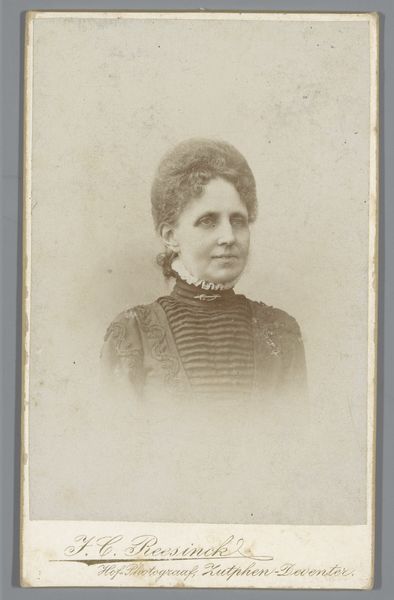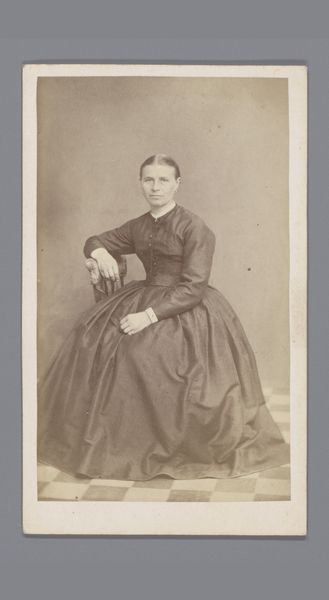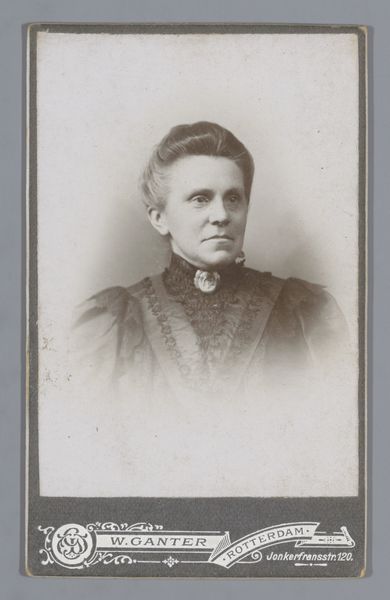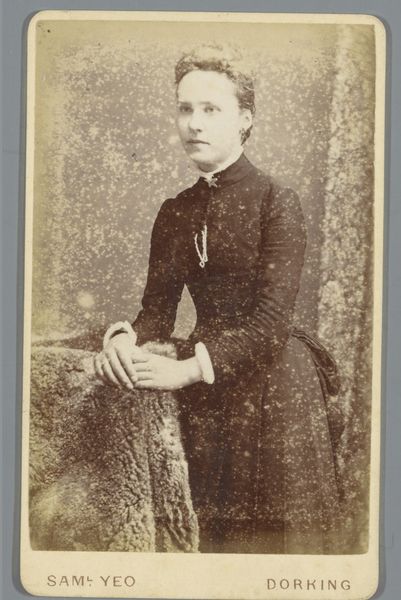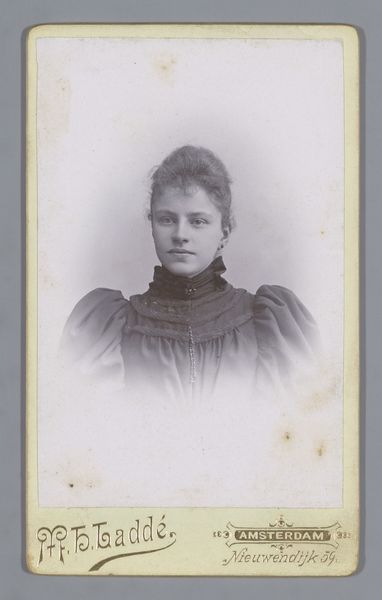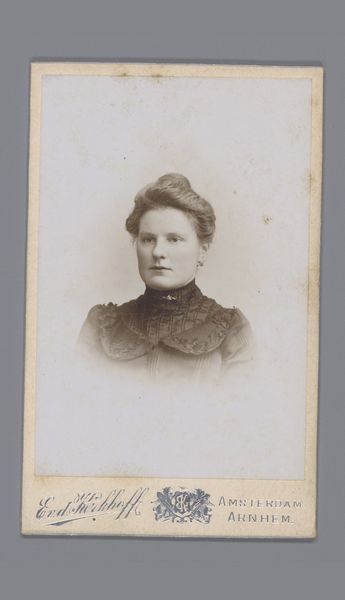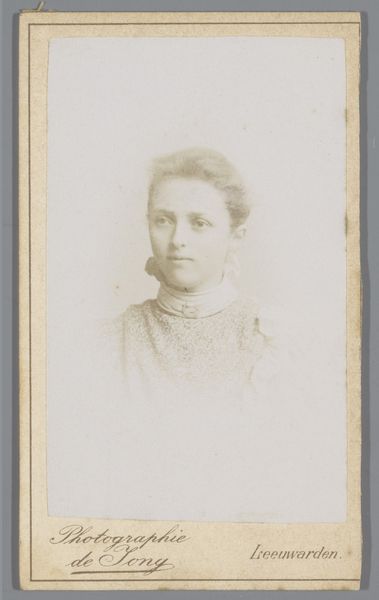
photography, albumen-print
#
portrait
#
still-life-photography
#
wedding photograph
#
photography
#
historical photography
#
19th century
#
albumen-print
Dimensions: height 83 mm, width 51 mm
Copyright: Rijks Museum: Open Domain
Curator: The piece before us, crafted between 1860 and 1900, is titled "Portret van een zittende jonge vrouw," an albumen print, and believed to be the work of Daniel Nyblin. The portrait presents a seated young woman. Editor: It possesses an almost haunting stillness. The soft sepia tones lend it an air of bygone solemnity. You can almost feel the weight of history and social expectations pressing on this young woman. Curator: The late 19th century was a fascinating period in terms of photographic portraiture. This image emerges within an era marked by the democratization of photography and expanding gender roles, but also stringent social codes and imperial power. How do you think those elements intersect in her representation? Editor: I see it primarily in her reserved demeanor. She isn't overtly emotive, maintaining instead a studied composure appropriate for the time. This image makes me consider the limited agency women had regarding their representation—who held the camera and determined how women appeared to the world, even in something as intimate as a portrait. I wonder what would she choose to express about herself if she had greater influence? Curator: That’s a crucial point to consider. And further to this notion of agency, understanding studio portraiture as a commercial activity tells us a lot about popular ideals concerning femininity at this historical juncture. Did the rising middle classes seek images of their wives and daughters that conveyed status, and domestic competence, through understated elegance? Was the "everyday" self subject to some degree of performance? Editor: Definitely a performance. In scrutinizing her posture and styling, and indeed the ornate patterned upholstery, there is evidence to interpret social status, an implicit narrative for potential suitors or family archives. I imagine this photo acted less as an insight into personality than a material display that enforced gendered and economic power dynamics. Curator: It's a confluence of personal and socio-political identity. These seemingly still photographs held significant public function as they gained more widespread usage. They reinforced visual orthodoxies as much as family biographies. Editor: I walk away reminded how even seemingly 'simple' portraits hold an array of untold stories. We can use these portraits to see echoes of ourselves and perhaps critique these power structures too. Curator: Precisely. There are nuances in the visual language used to assert not only how it used to be, but perhaps also, how it could be instead.
Comments
No comments
Be the first to comment and join the conversation on the ultimate creative platform.
